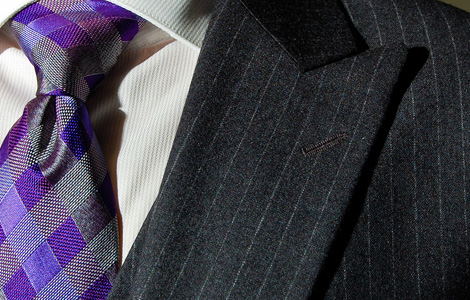What Are You Wearing?
In the airplane business, clothes make the salesman.
People in the airplane sales business try to dress for success, same as anyone. But the formula has changed over the years. Back in the days of multibillion-dollar airliner deals involving Boeing, Douglas, Lockheed, Convair and others — before deregulation, during the golden age of air-travel glamour — the costume was hand-tailored business suit, preferably a nice dark blue pinstripe, and wingtips (those are shoes, for those who’ve never seen a pair–you can Google them). A rule of thumb in those days was that the price of a really top-quality suit closely tracked the market price of an ounce of gold.
The folks who sell to airlines haven’t changed clothes, even though the airline business is almost unrecognizable compared to what it was back in its heyday. At Paris and Farnborough, the boys from Boeing and Airbus are still wrapped in Saville Row as they schmooze clients. At the next level down — high-priced executive jets and even mid- to economy-priced GA airplanes — fashion has changed markedly since the ‘70s. Back then, a general aviation salesman from Wichita, Kansas who hoped to make an impression might dip a toe in the water of mod styling. You could spot the guy from the marketing department a mile off by the glare from his white patent leather belt and matching shoes. Hairstyles matched the longer, coiffed look of the times, with fuller sideburns and more exuberant cuts that draped just over the ears. Trousers were flared but not bell-bottom, and contrasting sport coats were a light color or bold pattern, with a pocket hankie to match the primary-color trousers. (Some “looks” should stay in the era from which they came. The leisure suit should not, by law, be allowed to survive except in museum collections and photos of the quaint old 1970s. It is the swastika of men’s fashion.)
That was kind of fun and adequate for selling airplanes with propellers to doctors and oilmen. But when the GA factories started building jets, the sales department went straight for that Wall Street look – the full Corporate Uniform.
Now we’re undergoing yet another, more subtle shift. Blame it on Silicon Valley, where nobody ever wears a tie knotted four-in-hand, but the business-jet crowd is showing the first signs of shedding the banker look. In some recent advertisements, manufacturers (of airplanes with a price so high one must not speak its name) are depicting their executives tieless. The big issue becomes whether to leave just one shirt button open, or go radical and liberate two . If the Google guys and that Facebook billionaire can run around in tee shirts aboard their Boeings, surely airplane people – who are just as high-tech as you are, dammit!! – can drop the ties.
But don’t lose the dark navy-blue blazers. Please. That would be going too far.
